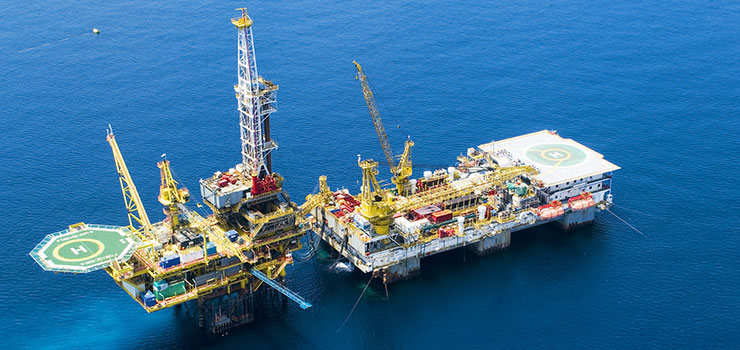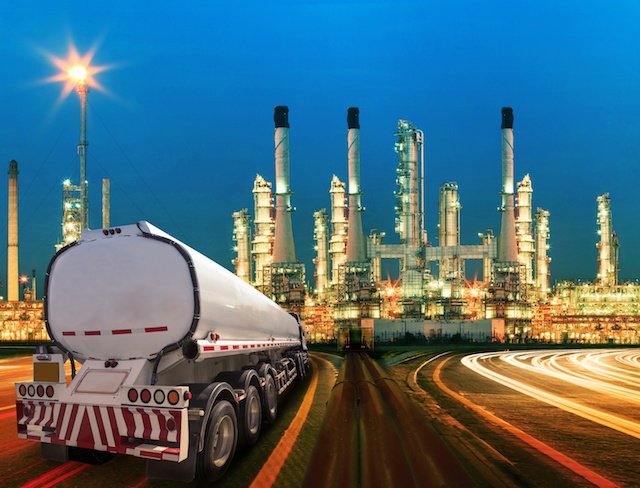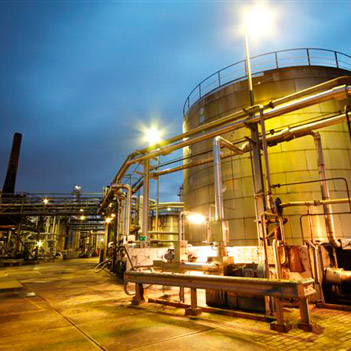
By Dr. S.A. Mcoy, B.C. Puckett, E.L. Hibner and edited and updated by J.E. Ward As oil and gas exploration increasingly expands its frontiers towards the use of wells in deepwater, where highly corrosive environmental conditions exist – hydrogen sulphide, carbon dioxide, chlorides, and free sulphur, as well as high temperatures, and pressures so the need arises for alloys that can stand up to these conditions. This article looks at how hardenable nickel alloys can be used to solve problems in these sour working conditions.
In the coming years the new frontier of oil and gas exploration will be in deep wells, and particularly those in deepwater. Compared to shallow wells, deep wells generally require equipment built with highperformance nickel base alloys. Wells are categorized as either being sweet or sour.
Sweet wells being only mildly corrosive, while sour wells are highly corrosive and contain hydrogen sulfide, carbon dioxide, chlorides and free sulphur. In addition, these varying levels of corrosive conditions are compounded by temperatures up to 260ºC and pressures up to 25,000 psi making material selection especially critical for sour gas wells. The materials of choice must be corrosion resistant, cost effective, reliable and have the required strength for the well conditions. As these conditions become more severe, material selection changes from carbon steels for sweet wells to duplex (austenitic-ferritic) stainless steels and nickel alloys such as Incoloy® alloys 825 and 925, Inconel® alloys 725HS and 725. The limiting chemical compositions of the nickel based alloys are displayed in Table 1 in the attached document.
Age hardened nickel-based alloys and cold-worked solid nickel-based alloys offer many advantages such as high strength, toughness, low magnetic permeability and excellent corrosion resistance. The choice of material for a particular set of well conditions is based on a number of selection criteria including:
• Mechanical properties,
• General corrosion resistance,
• Pitting and crevice corrosion resistance,
• Chloride stress corrosion cracking resistance,
• Sulfide stress corrosion cracking resistance.
Materials selection properties
The levels of strength in age-hardened materials becoming increasingly important, particularly for offshore applications that are exploiting high-pressure deep well reserves, where weight considerations can affect the economic viability of a project.
Material selection for down hole and wellhead equipment such as hangers, sub surface safety valves, pumps and packers all call for age hardenable alloys in order to obtain the necessary strength in heavier cross sections which cannot be strengthened by cold work.
Nickel alloys commonly used for these applications include Incoloy® 925, Monel® K500 and Inconel® 718, X750, 725and 725HS. Typical mechanical properties of high-performance nickel alloys used in oil country applications are shown in Table 2 in the attached document.
Age hardened alloys are used at varying strength levels depending on the application. Incoloy® 925 is used at 758 Mpa (110 Ksi) min yield. The min yield for Inconel® 718 and 725 is 827 Mps (120 Ksi). Inconel® 725HS is used at a 965 Mpa (140 Ksi) min yield. The enhanced strength properties of Inconel® 725HS are achieved through optimized thermal and mechanical processing during manufacture.
Galvanic compatibility
Galvanic corrosion is caused when dissimilar materials are in contact in a conductive fluid. The Incoloy® and Inconel® alloys are noble materials and therefore resistant to galvanic attack. In tests performed in ambient temperature seawater for 92 days at LaQue Centre for corrosion technology Inconel® 725 and 625 were shown to be galvanically compatible. General pitting and crevice corrosion. Traditionally corrosion resistant alloys are graded first by their pitting resistance equivalent number (PREN) and then by the equivalent cracking data generated in sour brine environment.
The critical pitting temperature (CPT) for an alloy is determined by exposing samples to an acidified 6% ferric chloride solution, as set out under ASTM Standard Test Method G48, Method C. The temperature is then raised in incremental amounts until the onset of pitting. New unexposed test specimens and fresh ferric chloride solution are used at each test temperature. The tests are only valid up to 85ºC because at higher temperatures the test solution becomes unstable. The minimum accepted CPT for many offshore applications is 40ºC. A ranking of alloys is shown in Table 3 Determining the critical temperature (CCT) of an alloy involves exposing samples to the same aggressive test solution but with a multiple-crevice device (TFEflourocarbon washer) attached to the surface of the test specimen. The temperatures shown in Table 3 of the attached document indicate the onset of crevice corrosion.
Resistance of age hardened nickel-based alloys to corrosion by seawater Nickel alloys with a PREN greater than 40 are very resistant to crevice corrosion in natural seawater service. Table 4 on the attached document, compares the crevice corrosion resistance of corrosion resistant alloys in seawater. Under both stagnant and flowing conditions, the weight losses are extremely low.
Table 5 on the attached document, shows crevice corrosion test results for Inconel® 625 and 725 using a more severe crevice geometry. Inconel® 725 displays excellent corrosion performance and shows no attack, while the alloy 625 samples corroded during the test to a maximum depth of 0.66mm.The titanium content in Inconel® 725 has a beneficial effect in improving crevice corrosion resistance in seawater.
General corrosion in sour environments
In mineral acids Inconel® 725 in the age hardened condition has comparable corrosion resistance to Inconel® 625. The use of various chemicals injected as inhibitors and dispersants means that good general corrosion resistance is also required in sour wells. Weight loss tests in hydrogen sulphide environments are shown in Table 6 of the attached document.
Inconel® 625 and Incoloy® 925 show good resistance to general corrosion in the test environment and marginally higher performance than Inconel® 718.
Environmental cracking
It is imperative that wellhead and downhole components resist stress corrosion cracking (SCC). The potential for SCC becomes greater with higher temperature and higher concentration of H2S and the presence of chloride ions and elemental sulphur. Potential failure in service can also be caused by lower temperature hydrogen embrittlement and sulphide stress cracking (SSC). These conditions may be accelerated by galvanic corrosion coupled with acidic conditions and dissolved H2S.
Suphide stress cracking and hydrogen embrittlement
In general resistance to SCC and SSC and hydrogen embrittelment improves with increasing content of nickel chromium molybdenum tungsten and niobium in an alloy. Table 7in the attached document, shows hydrogen embrittlement tests conducted on duplicate specimens of the Inconel® 725HS in accordance with Test Level III of NACE TM-0177. C ring specimens were galvanically coupled to steel. A minimum test duration of 720 hours is required by the specification. In this case the heat treated Inconel® 725HS specimens surpassed this test limit and there was no cracking in the sour brine environment, while cold worked Inconel® 625 exhibited cracking after 10 days.
Stress corrosion cracking
The strength of an alloy is a governing factor in its resistance to environmental cracking. Materials become more prone to environmental cracking as their strength increases. In order to obtain the optimum level of strength, ductility,toughness, and cracking resistance the maximum hardness levels are specified for each alloy in NACE International Materials Requirements MR0175 (see Table 8 in the attached document) HR Copson originally reported the beneficial effect of alloy nickel content on chloride SCC resistance of austenitic type alloys in 1959. Alloys 825, 925, 625 and 725 all contain 42% or greater nickel and as a result are all very resistant to stress corrosion cracking in water containing chlorides.
Stress corrosion cracking test results for C ring test pieces in a simulated sour well environment containing free sulphur are shown in Table 9 of the attached document.
Inconel® 725 exhibited good resistance to SCC in the presence of elemental sulphur up to 232ºC while Inconel® 718 cracked at 135ºC and cold worked Inconel® 625 cracked at 191ºC A more severe test in ranking the performance of materials is the slow strain rate (SSR) test. Common pass/fail criteria for SSR testing is a ratio of time to failure (TTF), % reduction of area (%RA) and % elongation (%EI) measured in a simulated oil processing environment compared to the same parameter in an inert environment (gases such as air or nitrogen). These are referred to as “critical ratios”. TTF, % RA and %EI ratios of >0.80 are usually accepted as pass rates in SSR tests.
If the ratios are below 0.90 the specimen is examined under a scanning electron microscope for evidence of ductile or brittle fracture. Samples exhibiting ductile behavior are acceptable while those with brittle fracture are not. All specimens are examined for secondary cracking in the gage length away from the primary fracture. The absence of secondary cracking is indicative of good SCC or SSR resistance and passes. The presence of secondary cracks is cause for rejection. One or more inert (air) SSR tests are conducted along with two or more environmental SSR tests for each test lot the level VI environment of 20% NaCl, 3.5Mpa, H2S 3.5 Mpa CO2 at 175ºC.
Summary
The data presented here is designed to help in selecting materials for the corrosive environments of sour oilfields. A final material selection for a specific application should be made based on test results and an economic analysis of cost effective alternatives. Inconel® 725 offers resistance to corrosion in extremely sour brine environments and in the presence of elemental sulphur of temperature up to 242ºC. The maximum permitted hardness under NACE MR 0175 requirements is 40 HRC. The stress corrosion cracking resistance of age hardened Inconel® 725 is superior to that of Inconel® 718 in sour environments.


